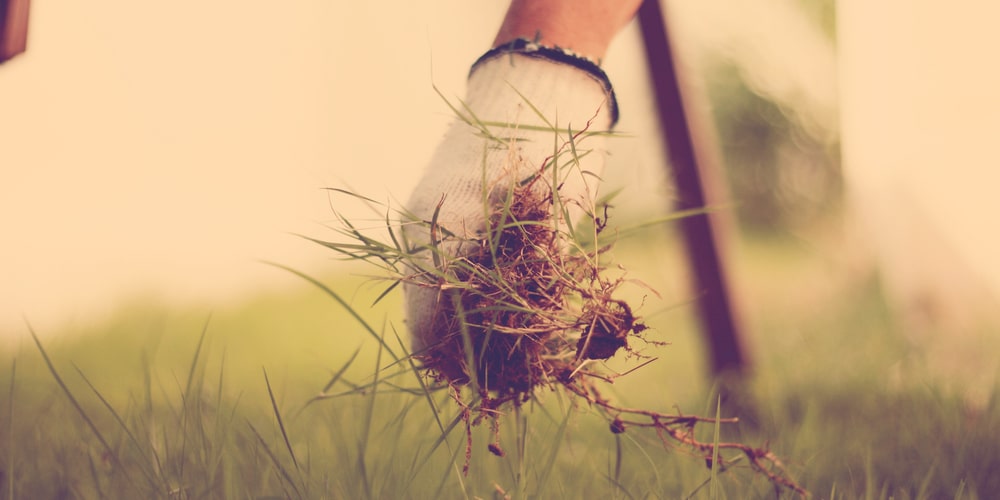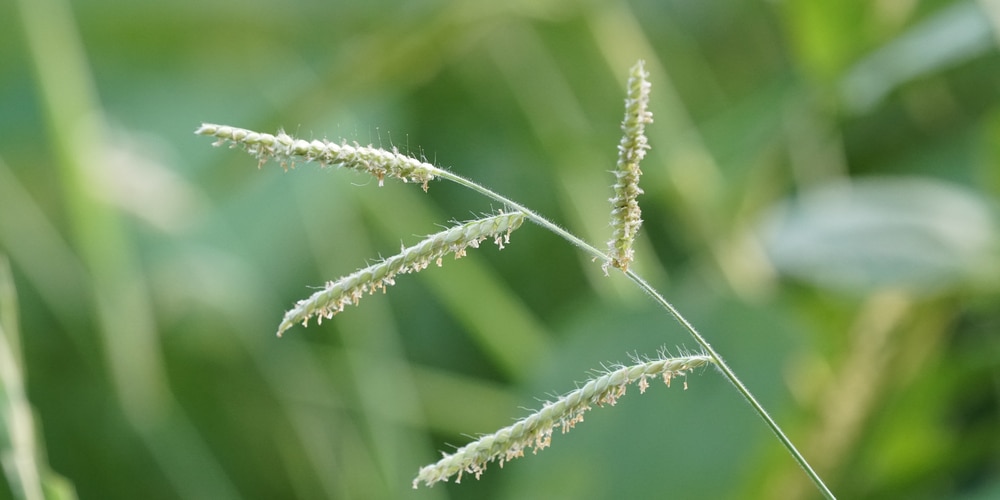Dallisgrass and crabgrass are both summer annuals that germinate early in the spring. They are considered weeds that can choke out lawn grass and are invasive. The problem with these weeds is that they both look very similar. It’s essential to identify the type of weed infesting your lawn and then choose the appropriate course of action. Let’s compare Dallisgrass vs. crabgrass.
What is crabgrass?

One of the most common weeds in America is crabgrass. Crabgrass is an invasive weed that grows throughout the spring and summer months. In most climates, crabgrass grows as an annual and becomes dormant in the winter.
Once crabgrass becomes established, it grows very quickly and can reproduce through seeds or by offshoots from its roots. It forms extensive mats that choke out most other plants. To prevent crabgrass from taking over your lawn, keep your grass healthy with regular fertilization, aeration, and proper watering.
Crabgrass is mostly found in lawns, but it can invade garden beds and grow among other plants. It tends to be unruly, so it may need to be removed by hand or with an herbicide (here are our picks for the best crabgrass removal tools).
What is Dallisgrass?

Dallisgrass is a warm-season bunchgrass that spreads quickly, forming large mats of foliage. It’s a perennial that’s extremely weedy and invasive. If you see dallisgrass sprouting in your lawn, don’t let it go to seed, or it will take over your entire yard. Pull out the plants by hand before they mature and spread their seeds. Dallisgrass prefers full sun and can withstand drought, but it’s sensitive to frost. It’s a weed that looks a lot like wheat.
Dallisgrass is extremely common in warm climates. It’s an aggressive weed that thrives on heat and drought; it can form dense mats that choke out most other plants. Dallisgrass is considered an invasive weed throughout much of America.
Dallisgrass vs. crabgrass similarities
Both dallisgrass and crabgrass germinate early in the spring. Once established, they grow very quickly. Seeds are the primary way these grasses reproduce, but it’s also possible to generate new roots from rhizomes underground. These roots become new plants, leading to rapid spread.
Both crabgrass and dallisgrass can keep a lawn from thriving. A healthy lawn is thick with deep roots, which hold soil in place and make it harder for weeds to germinate. Weeds tend to favor thin or bare spots, so healthy root systems can help prevent infestation of crabgrass and dallisgrass.
They both thrive during dry weather. Both crabgrass and dallisgrass stop growing when the soil is too wet, so they’re less likely to take over a lawn if it’s properly watered. Both species are quite sensitive to frost, which helps limit their spread in cooler climates.
Dallisgrass vs. crabgrass differences
Crabgrass and Dallisgrass are both weeds that commonly infest lawns across the United States. While they look similar at first glance, there are several differences with which to tell them apart.
Appearance
Dallisgrass has leaves that grow in a single plane, while those of crabgrass grow in alternating planes. Crabgrass is a bunchgrass that grows in clumps, making it look slightly different from dallisgrass. Crabgrass has a blade width of 1/4 to 1/3 inches and can grow to a height of 5 inches. Dallisgrass is a lot taller and if not cut can grow to a height of up to five feet.
Seedheads
Compared to crabgrass, dallisgrass seedheads tend to be a bit larger and more rounded. Both crabgrass and dallisgrass have pink flowers when they bloom in the summer, but those of dallisgrass are more likely to look like fluffy tufts that resemble a bottle brush.
Dallisgrass tends to have “deeper” roots, with a larger amount of underground stem tissue. In contrast, crabgrass has a much smaller root system and many shallow roots—the result is that dallisgrass can endure drought better than crabgrass.
Perennial vs. Annual
Dallisgrass is a perennial weed that’s long-lasting and grows from rhizomes as well as seeds. Crabgrass is an annual weed that dies back in the winter months or becomes dormant. It will regrow the following year from seeds that germinate in the early spring.
Conclusion
Crabgrass and Dallisgrass are both invasive weeds that commonly infest lawns across the United States. They can keep a lawn from thriving by growing very quickly, producing new roots from stems that touch moist soil. Both species are quite sensitive to frost, which helps limit their spread in cooler climates.